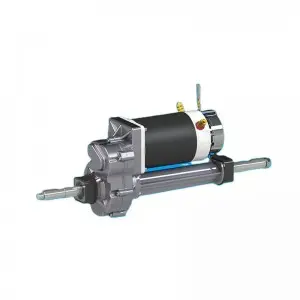The transaxle differential is an important part of the vehicle’s drivetrain, responsible for distributing power and torque to the wheels. In order to understand the importance of backlash in a transaxle differential, one must first understand what backlash is and how it affects the function of the differential.
Backlash refers to the gap or gap between the gears within the transaxle differential. It is the amount of movement that occurs before the gears mesh with each other. Simply put, it is the amount of rotational movement allowed before the gear changes direction.
The ideal amount of backlash in a transaxle differential is critical to its smooth operation and longevity. Too much or too little backlash can lead to problems such as increased noise, premature gear wear, and reduced performance. Therefore, maintaining the correct amount of backlash in the transaxle differential is critical.
A certain amount of backlash is required in the transaxle differential to ensure that the gears have enough room to accommodate changes in temperature, load, and position. This allows the gears to run smoothly without seizing or overheating. Additionally, backlash helps absorb shock and vibration, reducing the likelihood of gear damage.
So, what amount of clearance is considered acceptable in a transaxle differential? The answer may vary depending on the specific make and model of the vehicle. However, most automakers recommend a clearance of approximately 0.005 to 0.010 inches for optimal performance. It’s crucial to consult your vehicle’s service manual or a professional mechanic to determine your vehicle’s specific requirements.
When adjusting the backlash of the transaxle differential, it is a precise and delicate process that should only be attempted by a trained professional. The process involves carefully measuring existing backlash, removing and adjusting gears as necessary, and rechecking the backlash to make sure it falls within acceptable limits. Failure to properly adjust the clearance can cause further damage to the differential and driveline components.
In summary, the backlash in the transaxle differential is a key factor that directly affects the performance and life of the differential. Maintaining the correct amount of clearance is critical to ensuring smooth operation and preventing premature wear and damage. By understanding the importance of backlash and working with a professional mechanic to maintain correct specifications, vehicle owners can ensure that their transaxle differential functions optimally for years to come.
Post time: Dec-18-2023


